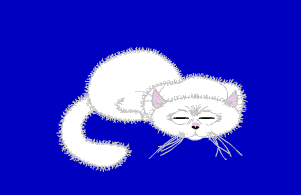
MOLECULAR PATHOGENESIS OF TOXOPLASMOSIS
In immuocompromised patients, latent infection with the obligate
intracellular parasite Toxoplasma gondii often recrudesces in the central
nervous system to produce the most severe manifestations of toxoplasmosis,
Toxoplasmic encephalitis. Hallmark features of Toxoplasmic encephalitis
are large necrotic lesions visible by computerized tomography (CT) or magnetic
resonance (MR) imaging of the brain. Although the basis of this pathology in
vivo is incompleteley understood, it is likely directly the result of
Toxoplasma’s astonishing propensity to destroy host cells through its lytic
cycle. The Toxoplasma lytic cycle has three main steps: invasion,
replication and egress. Our studies focus on elucidating the mechanism of
toxoplasma invasion, with the premise that identification of the key invasion
proteins will lead to their exploitation as targets for drug or vaccine
development. We have demonstrated that invasion proteins are mobilized
from intracellular secretory vesicles (micronemes) concomitant with parasite
attachment to host cells. Also, we determined that some of the invasion
proteins are adhesions capable of binding receptors on host cells.
Furthermore, we showed that one host cell receptor Toxoplasma use for attachment
are common cell surface glycoproteins, known as heparan sulfate proteoglycans.
By demonstrating that Toxoplasma uses multiple adhesions and ubiquitously
expressed receptors, these studies have revealed the molecular basis for
Toxoplasma’s ability to infect a variety of cells and tissues within its many
vertebrate hosts.
